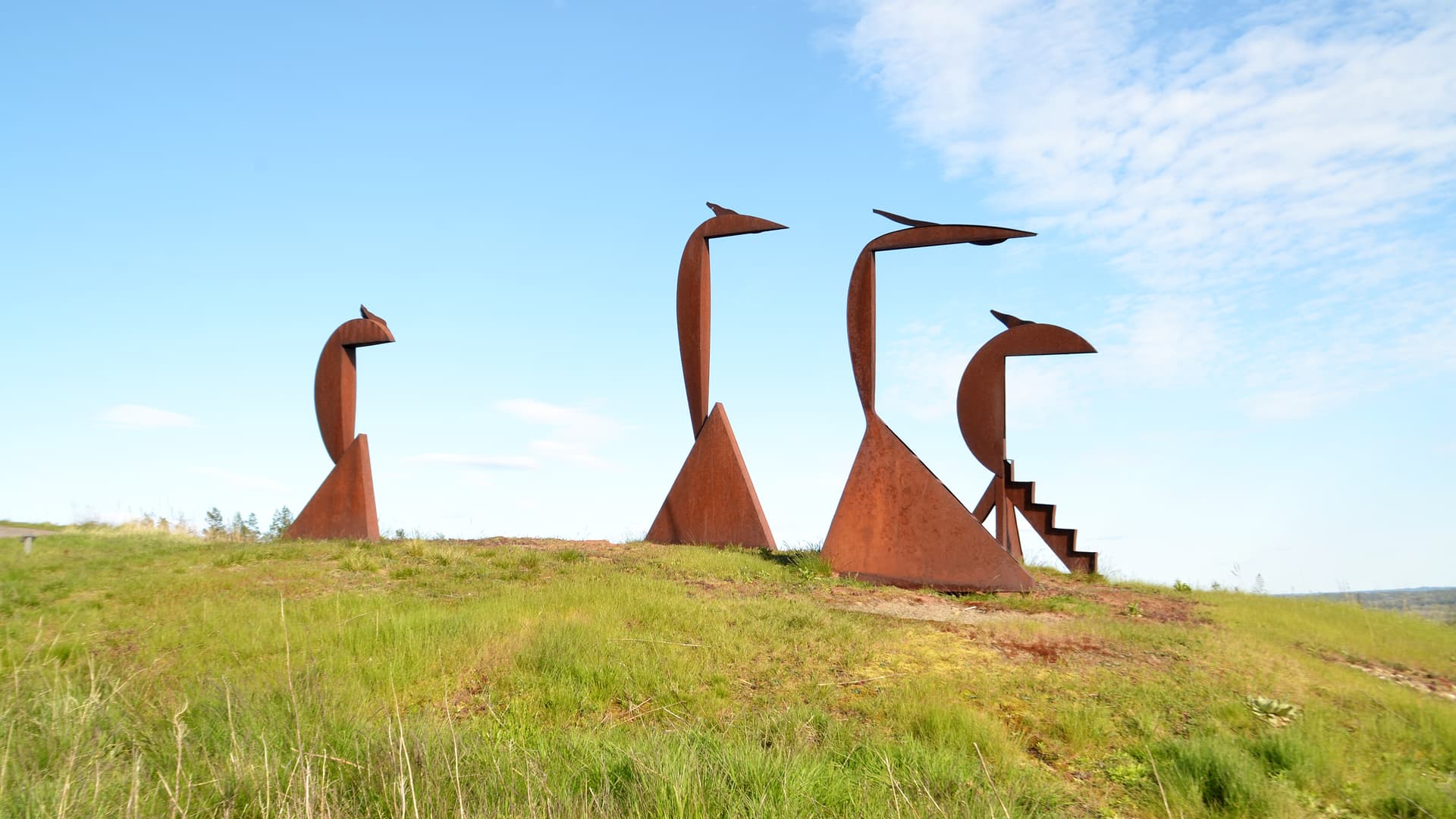18. Kvarntorpsmalanganer
ARTIST: Lenny Clarhäll (1999)
TECHNIQUE: Courtén steel

Lars Clarhäll encountered “malangians” in New York, when he saw a kind of large wooden sculpture that relatives make whenever a relative dies in the city of Malang on Java. The sculpture is a mark of respect for the deceased person and is supposed to reflect his character.
The places where humanity has worshipped their gods have looked different throughout history, but they have often been on hills or mountains. Probably people believed that the closer you were to heaven, the closer you were to the gods. The art works that you are looking at now can best be described as a kind of borderline history. They are equal part art and play and a mix of rites and cultures from different countries.
The four sculptures done in courtén steel are beautifully rust-brown. In this work Clarhäll uses forms characterized by their simple elegance. “Malangians” can be seen as strict, god-like creatures who meditatively look out at the horizon. Or else the works are simply geometric figures. It is up to the viewer to decide what you see.
Lenny Clarhäll is one of the best known artists from the 70s and 80s in Sweden. He was born in 1938 and was trained at the Royal College of Fine Arts in Stockholm. He has also studied at The Royal Danish Academy of Art in Copenhagen. There he did oil painting and graphics. His debut took place at Gallery Doctor Glass in Stockholm; he has also been active in Mexico and the US.
Clarhäll has a feeling for paradoxical meetings between popular expressions, classical sculpture and a tradition of craftsmanship. His works adorn many public places in the country.
As mentioned before, Malangians are traditionally made in the city of Malang when a relative dies. They might require a long time to make and then they are destroyed after having been shown in public only once. For us this is an unusual way of handling a relatives´death – naturally we start to consider our own relationship to death. Perhaps we might call grave stones our equivalent to the Malangians. Perhaps we react to the fact that Malangians are destroyed, but we also finally remove many grave stones with the purpose of making room for new ones. The work gives us a possibility to reflect upon our relationship to the life cycle. Perhaps it is appropriate to place this work of art right here on Mount Kvarntorp, where new life springs out of what once was dead.
Particularly at night when the sun shines warmly at a slant on the four sculptures, the Malangians appear in a new way. You can see their sharp profiles and their dignified posture. Perhaps they are four gods watching over us giving us comfort when we ask for it.
Sidinformation
- Senast uppdaterad:
- 20 september 2023
- Sidan publicerad av:
- Piia Edh
